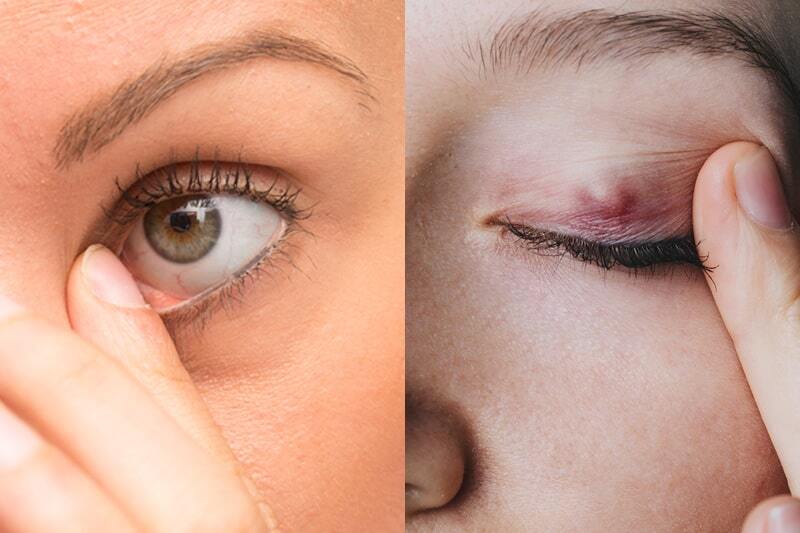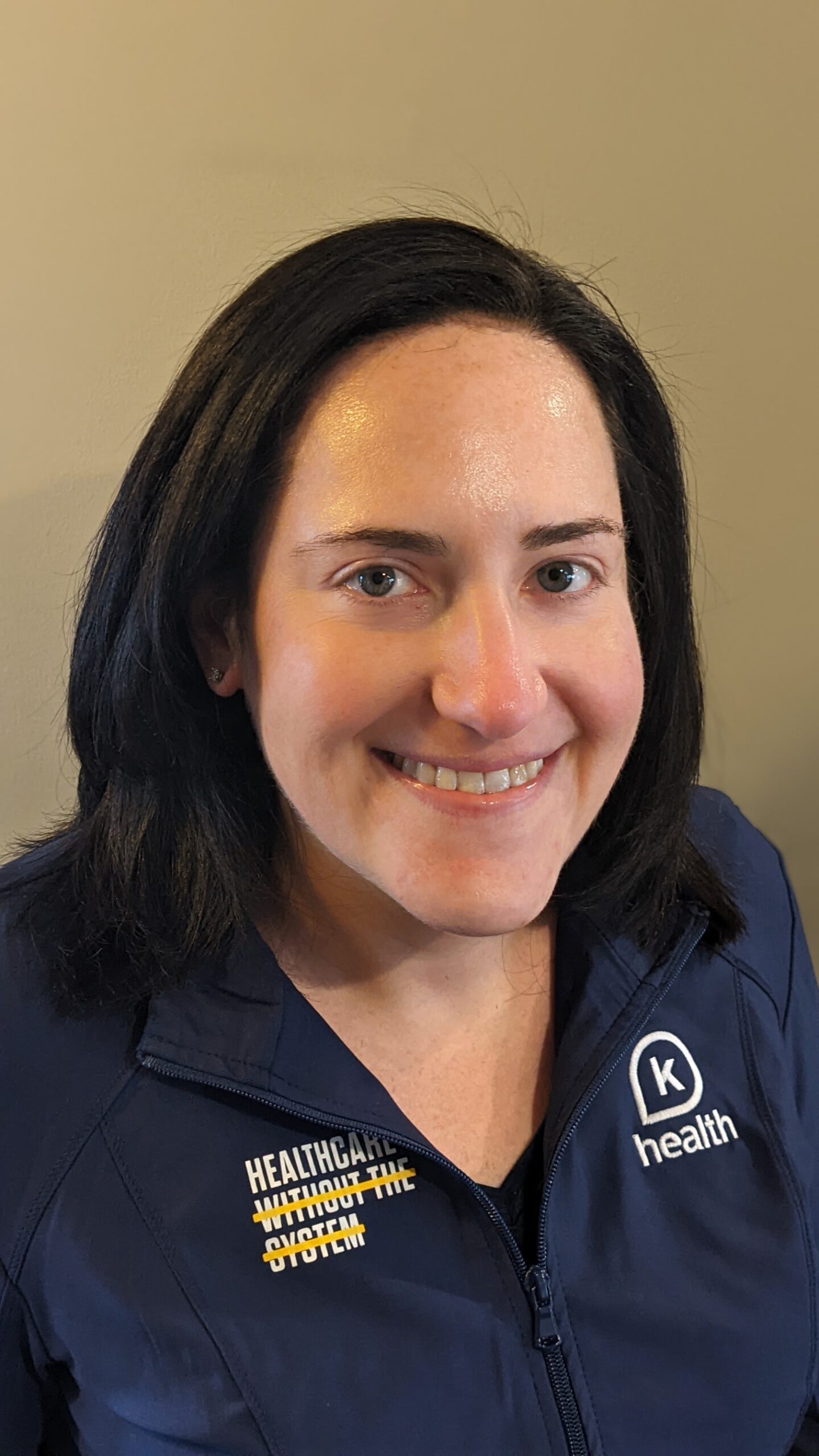Have you ever woken up with a red, inflamed eye? When you look in the mirror, do you see an angry lump on your eyelid?
You may have a chalazion or a stye (hordeolum), a lump on the top or bottom eyelid caused by trapped oil.
Both can present themselves similarly although a chalazion can sometimes not be painful, red, or sore.
They can be incredibly inconvenient if you have to make a presentation at work or have an important event.
Knowing what they are, how to treat them, and prevention methods can help you recover from styes and chalazia quickly and avoid recurring cases.
What is a Chalazion?
If your eyelid has a pea-like lump under the skin, then you may have a chalazion.
A chalazion, sometimes referred to as a meibomian cyst, is a swelling anywhere on your eyelid that can be large enough to blur your vision or distort the shape of your eyelid.
It occurs when one of the small oil glands (meibomian glands) in the upper and lower eyelids becomes inflamed.
While styes are typically caused by bacterial infections, a chalazion is a reaction to trapped oil secretions and not generally caused by bacteria, although they can become infected.
If you have a bump on your eyelid that is not tender, more than likely you have a chalazion.
Chat with a doctor today about your stye or chalazion.
Get startedWhat is a Stye?
If you woke up with a red, painful lump on your eyelid or the follicle of your eyelash, you may have a stye.
Styes occur when the oil-producing gland of your eyelash follicle becomes infected. It appears as a red, pimple-like bump usually resting directly on the margin of your eyelid.
There are two main types of styes:
- External styes: These are the most common type of styes usually caused by an infection of the eyelash follicle in the sebaceous gland that forms on the outer part of either the upper or lower eyelid.
- Internal styes: These styes form on either of your inner eyelids in the meibomian gland and face your eyeball. They tend to be more painful than external styes as they push on your eyelid as they grow.
Symptoms
Many of the symptoms for a chalazion and stye overlap although typically a chalazion is a painless bump that is not caused by a bacterial infection.
Chalazion
- A painless bump or swelling in the eyelid
- Blurred vision
- Mild irritation causing your eyes to water
Stye
- Red, sore lump on the eyelid similar to a boil or pimple
- A small pus spot at the center of the bump
- Crusting along the eyelid
- Eye tearing
- Light sensitivity
- Soreness
- Itching
- Feeling there is something in your eye

Causes
While chalazia and styes can appear similar in symptoms, their causes are different.
Chalazion
A chalazion can be caused by a blockage in one of the tiny meibomian glands of the upper and lower eyelids.
The blockage can happen when the oil produced by the meibomian glands that help moisten the eyes becomes too thick to be secreted.
It can also happen when the opening of the meibomian gland becomes too narrow for the oil to drain easily.
If the oil is not drained adequately, it remains trapped and inflames the surrounding tissues.
This results in a bump.
Stye
A stye is caused by an infection of oil glands in the eyelid often caused by the bacterium staphylococcus.
An eyelash follicle can get clogged with dead skin cells or debris resulting in a sore, red bump that’s tender to touch.
Treatment
Most styes and chalazia can be treated at home and will go away on their own with proper care.
Chalazion
Chalazia can go away on its own within a few days or weeks aided by applying warm compresses to reduce the swelling by softening the oils in the blocked glands.
Certain medical treatments may be indicated if applying warm compresses is unsuccessful.
These may include eye drops or topical creams.
In some cases, corticosteroid injections and surgical procedures to drain the eye may be necessary.
In severe cases, your doctor may wish to numb the area and cut open the chalazion to drain it.
Stye
If you have a stye, do not squeeze or pop your stye as this can cause the infection to spread.
A warm compress applied to a stye regularly can reduce the swelling, unclog the hardened oil inside the stye allowing it to drain, and bring the pus to the surface.
Soak a washcloth in hot water and gently apply it to your stye. This is the best home remedy.
Prevention of Chalazions and Styes
Some ways you can lower your risk of getting a stye include:
- Avoid touching or rubbing your eyes.
- If you suffer from hay fever or allergies, take medications to relieve itchiness.
- Treat blepharitis, rosacea, and seborrheic dermatitis.
- Keep contacts clean and disinfected and don’t reuse disposable contacts.
- Wash your hands before touching contacts or eyes.
- Wash your hands with soap and warm water frequently.
- Use a hand sanitizer that contains alcohol.
- Avoid wearing old eye makeup, specifically mascara and eyeliner. Bacteria can be transferred through infected makeup.
- Don’t share your eye makeup with anyone.
Risks of Chalazions and Styes
You are more likely to develop a stye by rubbing or touching your eye excessively.
This increases your likelihood of transferring staphylococcus into your eye follicles and causing an infection.
The following situations can also put you at greater risk:
- Having itchy eyes from hay fever or allergies causing you to rub your eyes
- Using contaminated eye makeup such as mascara or eyeliner
- Leaving makeup on overnight or not removing all your makeup regularly
- Skin conditions, such as rosacea and seborrheic dermatitis
- Being sleep deprived as this can cause you to rub your eyes more frequently
- Diabetes
- Inflammation of your eyelid (blepharitis)
You may be at greater risk of getting chalazia if you have any of the following conditions:
- Viral conjunctivitis
- An infection covering the inside of the eyes and eyelids
- Seborrheic dermatitis
- Rosacea
- Acne
- Long-term eyelid inflammation
When to See a Doctor
Most of the time, your stye will go away on its own after a few days of home care.
However, there are some tell-tale signs that you should visit a doctor.
If you experience any of the following symptoms, seek medical attention:
- Bleeding from your stye or eye
- Your eye is swollen shut
- Your eyelid has crusting around it
- You have blurred or double vision
- You have a fever
- The stye is spreading and getting more painful despite warm compresses
- Your eye is weeping pus
Chat with a doctor today about your stye or chalazion.
Get startedHow K Health Can Help
Did you know you can access online urgent care with K Health?
Check your symptoms, explore conditions and treatments, and if needed, text with a healthcare provider in minutes.
K Health’s AI-powered app is based on 20 years of clinical data.
Frequently Asked Questions
K Health has strict sourcing guidelines and relies on peer-reviewed studies, academic research institutions, and medical associations. We avoid using tertiary references.

 Medically reviewed
Medically reviewed